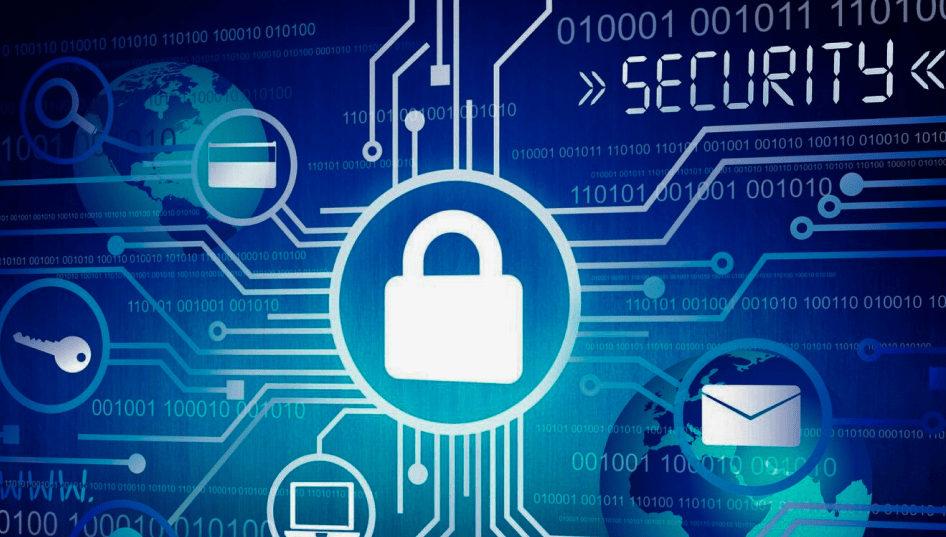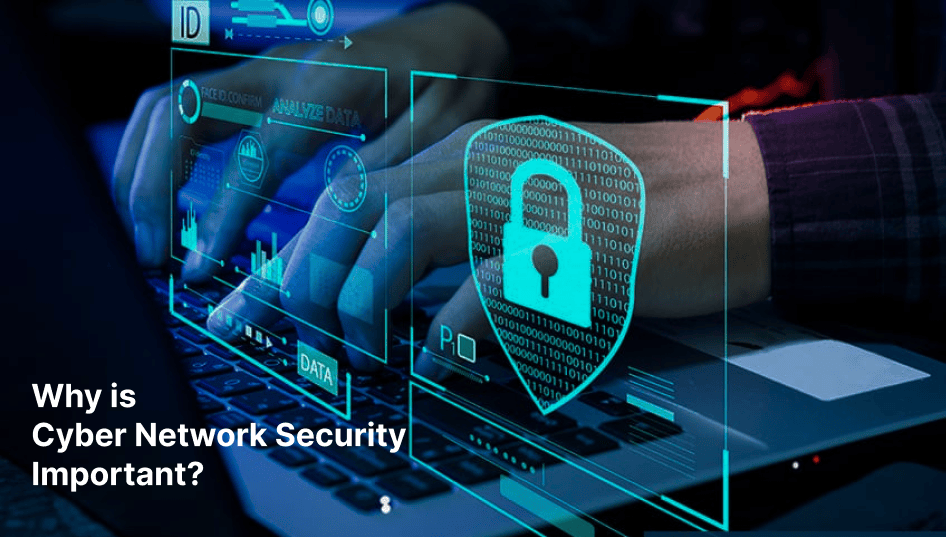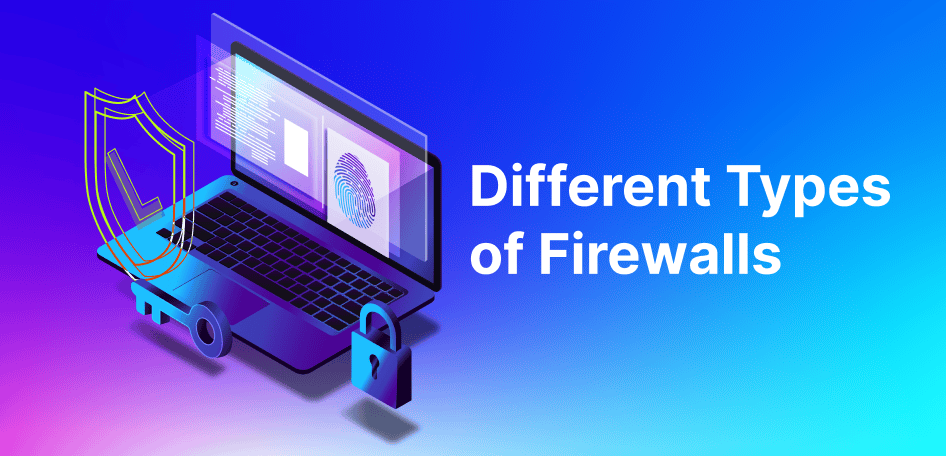What is Network Security?
What is Network Security?
A Comprehensive Guide to Understanding and Implementing Network Security
Defining Network Security
Welcome to our comprehensive guide on network security. This blog post, penned by Easy2Patch experts, aims to clarify the complex world of computer and network security. At its core, network security is the practice of safeguarding a computer network and its resources from unauthorized access, use, disclosure, disruption, modification, or destruction. This expansive field goes beyond data protection, extending its reach to encompass the entire network infrastructure. Within this guide, we aim to offer an in-depth exploration of security services in the context of network security, delving into their critical role and shedding light on the paramount importance of safeguarding network security.
One prominent category of threats is malware, which includes viruses, worms, spyware, and ransomware. Malicious programs, known as viruses, attach themselves to legitimate files and spread when executing the infected file. Worms, on the other hand, are standalone programs that replicate and spread across networks, often exploiting vulnerabilities in systems. Spyware is designed to secretly gather information about a user's activities without their knowledge, compromising privacy. Ransomware encrypts files and demands payment for their release, posing a significant threat to data integrity.
The Role of Network Security in the Digital Age
Network security has become more crucial than ever in our rapidly evolving digital landscape. Defending against both individuals seeking unauthorized data access and organized groups aiming to disrupt services or compromise entire systems is essential. To counteract these threats, professionals in network security employ a robust strategy known as "defense in depth," which entails implementing multiple layers of security controls across the network architecture. Network security is a pressing concern for businesses and individuals alike. It encompasses a range of measures and technologies designed to protect the integrity, confidentiality, and availability of data within a network. Effective network security helps prevent unauthorized access, data breaches, and malicious activities such as malware and phishing attacks.
Common Network Security Threats
The nature of threats has evolved with advancements in technology. Various threats pose significant risks to the integrity and confidentiality of data. We will now explore prevalent network security threats:
Malware
Malware, a collective term for malicious software, encompasses a range of harmful entities like ransomware, viruses, worms, Trojan horses, and spyware. These insidious programs often infiltrate systems through deceptive means such as phishing emails, infected links, and untrusted websites.
Phishing Attacks
Phishing attacks involve sophisticated attempts to manipulate individuals into revealing sensitive information. Attackers commonly use emails with malicious links or attachments, posing as trustworthy entities
Ransomware
A specific form of malware, ransomware, encrypts an organization's data and demands a ransom for its release. Prevention strategies involve keeping operating systems, applications, and security patches up to date, along with the implementation of regular data backups to mitigate potential data loss.
Distributed Denial of Service (DDoS)
Distributed Denial of Service (DDoS) attacks aim to disrupt network accessibility by overwhelming servers with traffic. Attackers utilize botnets to generate massive amounts of traffic, rendering systems inaccessible to users.
Social Engineering Attacks
Social engineering attacks exploit human psychology to manipulate individuals into divulging confidential information. Tactics like pretexting, baiting, and phishing are commonly employed.
Man-in-the-Middle (MitM) Attacks
Man-in-the-middle (MitM) attacks involve intercepting and altering communication between two parties, often gaining unauthorized access to sensitive data. Common entry points for MitM attacks include insecure public Wi-Fi and successful phishing attempts.
SQL Injection Attacks
Finally, SQL injection attacks target vulnerabilities in web applications that use SQL databases. By injecting malicious code, attackers gain unauthorized access, modify data, or execute harmful commands. We trust that you now have a more profound understanding of computer network security, its pivotal role in the digital age, and the common threats it strives to counteract. However, this is just the tip of the iceberg. Next, we delve into a question that likely occupies your thoughts: "Why is cyber network security important?"
Why is Cyber Network Security Important?
 Ever wondered why everyone’s buzzing about cyber network security these days? Well, let’s dive right in!
Network security protection is crucial given our increasing reliance on technology. From personal data to financial transactions, cyber threats can disrupt businesses and impact individuals globally. Cyber network security is not just a technical issue but a crucial aspect that every individual and organization should prioritize. It’s about safeguarding our information systems, identities, and our world.
Ever wondered why everyone’s buzzing about cyber network security these days? Well, let’s dive right in!
Network security protection is crucial given our increasing reliance on technology. From personal data to financial transactions, cyber threats can disrupt businesses and impact individuals globally. Cyber network security is not just a technical issue but a crucial aspect that every individual and organization should prioritize. It’s about safeguarding our information systems, identities, and our world.
Protecting Data
Cyber network security is indispensable for protecting data, whether at rest or in transit, against vulnerabilities and cyber threats. Deploying robust security protocols, employing sophisticated encryption techniques, and implementing proactive countermeasures are integral aspects of this safeguarding process. Prioritizing data and network security enables organizations to effectively reduce the likelihood of data breaches, financial losses, and damage to their reputation.
Ensuring Stability and Trust
Good network security benefits businesses in various ways, including stability, trust, and regulatory compliance. It bolsters client and consumer trust, shielding your organization from the potential negative impacts of a security breach, like financial and reputational damage, and legal consequences.
Responding to Evolving Threats
Cybersecurity is a concept that continuously changes as new threats appear every day, and experts update existing practices to prevent the latest attacks. Hackers pose a constant challenge, and cybersecurity professionals help keep data safe and accessible. They focus on protecting electronic information on websites, networks, or devices from hackers.
Cybersecurity Awareness
Cyber threats can come from any level of your organization. Workplaces must include cybersecurity awareness training to educate staff about common cyber threats like social engineering scams, phishing, ransomware attacks, and other malware designed to steal intellectual property or personal data.
The Future of Cybersecurity
As cybercrimes continue to evolve, wreaking havoc on both enterprises and individuals, the significance of cybersecurity is on a steady rise. It strengthens an organization’s defense posture and is critical in mitigation and response. Introducing new technology accessing connected devices via Bluetooth and Wi-Fi necessitates implementing intelligent cloud security solutions. Additionally, they should enforce strong password policies, such as multi-factor authentication, to mitigate unauthorized access.

Now, get ready to discover the wide-ranging benefits that network security brings to businesses.
What are the Key Advantages of Implementing Network Security for Businesses?
The advantages of investing in network security extend beyond mere technological fortification; they encompass aspects of trust-building, risk mitigation, information protection, and overall business resilience.
Builds Trust
Implementing network security is a commitment to safeguarding trust, reassuring stakeholders, and shielding businesses from the repercussions of a security breach. It goes beyond a legal obligation, playing a crucial role in maintaining a positive reputation.
Mitigates Risk
A comprehensive network security solution safeguards against external threats while also assisting in compliance with business and government regulations. By adhering to established data and network security standards, businesses reduce the risk of legal repercussions and financial fallout in the event of a security breach.
Protects Proprietary Information
At the heart of network information security lies the defense of proprietary information. It acts as a guardian against unauthorized access, misuse, or alteration of critical data. By creating barriers to entry, businesses can safeguard their intellectual property, trade secrets, and confidential information from falling into the wrong hands.
Prevents Data Theft and Sabotage
Cybersecurity acts as a strong defense against threats like data theft and sabotage. A well-implemented network security system significantly lowers the risk of falling prey to malicious activities, preserving the confidentiality and integrity of critical business information.
Protects Workstations from Spyware
Securing workstations with network security measures, particularly against spyware, ensures individual terminals' safety and protects shared data from unauthorized access. Securing terminals and data through network measures enhances business protection and establishes a secure, efficient work environment.
Promotes Privacy, Continuity, and Availability
Good network security extends beyond immediate threats, contributing to overall business stability and Continuity. The three pillars of privacy, consistency, and availability ensure confidential information, consistent operations, and constant access to critical resources, enhancing both business safeguarding and operational efficiency.
The foundation has been laid! It's time to shift our focus to the proactive measures that constitute the first line of defense in the digital realm—the various types of network security.
What are the Various Types of Network Security?
 In this section, we will delve into the types of network security, providing an in-depth examination of diverse measures aimed at establishing a strong defense against unauthorized access, misuse, and malicious activities. Each type of network security we will mention plays a vital role in the holistic protection of digital assets.
In this section, we will delve into the types of network security, providing an in-depth examination of diverse measures aimed at establishing a strong defense against unauthorized access, misuse, and malicious activities. Each type of network security we will mention plays a vital role in the holistic protection of digital assets.
1. Access Control
Access control restricts network resource access based on user roles and privileges. It includes Role-Based Access Control (RBAC), granting permissions based on predefined roles; Discretionary Access Control (DAC), giving access at the user's discretion; and Mandatory Access Control (MAC), enforcing access rules per security policies. Access control is important because it ensures that only authorized users can access sensitive data and resources, reducing the risk of data breaches and cyber attacks.
2. Firewalls
Firewalls regulate traffic between trusted and untrusted networks using predefined rules. Types include packet-filtering firewalls, stateful inspection firewalls, and proxy firewalls. Firewalls are important because they prevent unauthorized access to a network and protect against malicious traffic.
3. Intrusion Detection and Prevention Systems (IDPS)
IDPS detects and prevents unauthorized network access or malicious activities. It analyzes activities, identifies threats, and takes preventive measures. IDPS is important because it provides real-time threat detection and prevention, reducing the risk of data breaches and cyber attacks.
4. Antivirus and Antimalware Software
These programs detect, prevent, and remove malicious software by scanning files and activities continuously. Antivirus and antimalware software are important because they protect against malware, viruses, and other malicious software that can compromise a network.
5. Data Loss Prevention (DLP)
DLP (Data Loss Prevention) prevents unauthorized access and transmission of sensitive data by monitoring and blocking transfers. DLP is important because it helps organizations protect sensitive data from unauthorized access and data breaches.
6. Virtual Private Networks (VPNs)
VPNs establish secure, encrypted connections over untrusted networks, ensuring data confidentiality during transmission. VPNs are important because they provide secure remote access to a network, protecting against unauthorized access and data breaches.
7. Secure Sockets Layer (SSL) and Transport Layer Security (TLS)
SSL and TLS protocols secure network communication by encrypting data transmissions. SSL and TLS are important because they provide secure communication between a client and a server, protecting against eavesdropping and data tampering.
8. Email Security
Email security measures protect against phishing, malware, and unauthorized access through spam filters, encryption, and authentication. Email security is important because it protects against email-based attacks, which are a common entry point for cyber attacks.
9. Wireless Security
These measures secure wireless networks using encryption protocols, strong authentication, and intrusion detection. Wireless security is important because it protects against unauthorized access to a wireless network, which can lead to data breaches and cyber attacks.
10. Zero-Trust Security
Zero-trust security continuously verifies user and device identities before granting access. Zero-trust security is important because it provides an additional layer of security, reducing the risk of unauthorized access and data breaches.
11. Cybersecurity Education
Organizations invest in educating users to actively identify and mitigate potential threats. Cybersecurity education is important because it helps users understand the risks associated with cyber attacks and how to protect against them.
Firewalls: Your Network's Watchtower
What is a Firewall?
A firewall is a dedicated security device designed to strengthen your digital perimeter by judiciously filtering incoming and outgoing traffic. A firewall is positioned between your computer and external networks. Its overarching role involves the management of network traffic, screening for potential threats, and repelling unauthorized access attempts. The protective prowess of firewalls extends through both hardware and software implementations, ensuring a multi-layered defense against diverse cyber adversaries.
Firewalls use a few different methods to protect your network or computer. These include packet filtering, a proxy service, and stateful inspection. Packet filtering examines the packets of data, comparing it against filters, which consist of information used to identify malicious data1. Proxy service acts as an intermediary between your computer and the internet, filtering out malicious data before it reaches your computer. Stateful inspection firewalls keep a comprehensive record of all active network connections and transactions, allowing them to identify and block malicious traffic.
Different Types of Firewalls
 The firewalls we will mention are classified based on system protection, form factor, network placement, and data filtering methods.
Among the notable types are:
The firewalls we will mention are classified based on system protection, form factor, network placement, and data filtering methods.
Among the notable types are:
- Network Firewall: Strategically positioned at the convergence point between trusted internal systems and the vast expanse of the internet, the network firewall serves as a vigilant protector. It oversees and enforces predefined rules for incoming and outgoing traffic.
- Host-Based Firewall: The host-based firewall provides a focused layer of protection at the individual device level. Installed directly on computers or devices, it acts as a sentinel, safeguarding against potential threats.
- Hardware Firewall: Manifesting as a tangible device connected to your network, the hardware firewall erects a formidable barrier. It firmly guards the internal network, strengthening your digital perimeter against incoming traffic from external sources.
- Software Firewall: The software firewall is embedded in each device, functioning as a vigilant custodian. It controls network traffic to and from these devices, enhancing the overall security posture.
- Stateful Inspection Firewall: This firewall scrutinizes traffic based on state, port, and protocol operating at a granular level. It monitors activities from connection initiation to closure, allowing or blocking traffic.
- Proxy Firewall: The proxy firewall adds a layer of security functioning as a gateway between networks for specific applications. It intermediates communication, mitigating direct system access and bolstering overall defense.
- Next-Generation Firewall (NGFW): Evolving beyond conventional packet filtering, NGFWs represent the vanguard of modern cybersecurity. These advanced firewalls, deployed by companies worldwide, combat contemporary threats such as sophisticated malware and application-layer attacks.
How Do Firewalls Protect Your Network from Threats?
In the intricate ballet of network communications, firewalls emerge as the choreographers, meticulously examining and filtering traffic to ensure only authorized and secure passage. The protective mechanisms employed by firewalls revolve around three primary methods:
- Packet Filtering: This access control mechanism dissects small data units (packets) against a predetermined rule set. Packets adhering to the rules proceed to their destination, while the rest face rejection, forming an initial line of defense.
- Proxy Service: The proxy firewall introduces an intermediary role by fetching data on behalf of users, preventing direct communication between users. This extra layer of security minimizes direct system exposure.
- Stateful Inspection: As vigilant custodians of network activity, stateful inspection firewalls track outgoing packets and compare incoming responses to their database of active sessions. Only those responses aligning with valid corresponding outbound packets are approved, fortifying the defense against potential threats.
Email Security: Safeguarding Your Digital Correspondence
Understanding Email Threats
Email, a cornerstone of workplace communication, facilitates a staggering 333 billion daily exchanges in the global digital realm. Cybersecurity faces an ongoing challenge as email threats continually adapt. Cybercriminals devise new methods to exploit this vulnerability as businesses increasingly rely on email for communication. Email, often perceived as an easy entry point, serves as a conduit for attackers to breach corporate security, with a single misguided click precipitating a security crisis for an entire organization. Therefore, it is crucial to educate users about email security to minimize the risk of human error and ensure that employees understand the importance of email security.
Various common types of email threats have emerged, including:
- Malware: Cybercriminals craft software specifically to inflict damage on systems or gain unauthorized access to critical infrastructure.
- Phishing Emails Cybercriminals impersonate reputable entities in fraudulent emails to illicitly acquire sensitive information.
- Ransomware: Threats borne through email employ software to block access to files, typically containing valuable intellectual property.
- Email Spoofing: Attackers fabricate email headers to create the illusion that messages originate from trusted sources.
- Spam: Unsuspecting recipients face large-scale dissemination of irrelevant email messages.
- Spear Phishing
Spear phishing tailors attacks to individuals, using data from sources like social media for a convincing façade. The goal is to trick recipients into revealing sensitive information or clicking on malicious links.
Example: An email, seemingly from a colleague, includes project details only an insider would know, luring victims into divulging information. -
Whaling
Whaling focuses on high-level executives with sophisticated, personalized phishing. The aim is to gain access to sensitive data or manipulate executives for fraudulent purposes. Example: A CFO, thinking a request for a time-sensitive investment is legitimate, unwittingly transfers funds to an attacker's account. -
CEO Fraud
CEO fraud involves impersonating top executives to deceive employees into making financial transactions or disclosing sensitive information. Example: An email from the CEO instructs a finance department to transfer funds to a supposed business partner, leading to a fraudulent transaction. -
Business Email Compromise (BEC)
CEO fraud involves impersonating top executives to deceive employees into making financial transactions or disclosing sensitive information. -
Attachment-based Malware
Attachment-based malware sends seemingly harmless files containing malicious code. Opening these files exposes recipients to malware, compromising their systems.
Example: A disguised invoice attachment carries malware, compromising the recipient's system and potentially leading to data breaches. -
Drive-by Downloads
Drive-by downloads embed malicious links within seemingly innocent emails. Clicking on these links silently downloads malware onto recipients' devices.
Example: A seemingly harmless email link promising industry insights silently installs malware, compromising sensitive data and potentially causing a security breach.
How Does Email Security Work?
Email security, a proactive practice, utilizes advanced technology to scrutinize incoming emails for potential threats. It uses encryption to secure outbound email traffic, strengthening protection against cybersecurity attacks for mailboxes, data, users, and organizations.
Email security solutions operate on a pre-delivery protection model, intercepting email-based threats before they infiltrate mail servers. These solutions act as a formidable defense against spam, viruses, malware, and denial-of-service attacks. The comprehensive scanning process includes examining attachments and URLs in all incoming, outbound, and internal email communications for any malicious or harmful content.
Best practices for email security involve establishing a robust security posture and incorporating multiple layers of security measures. Leverage effective security intelligence across the entire architecture, implement retrospective remediation strategies, and employ encryption to prevent data leakage. By adopting these practices, organizations can significantly enhance their resilience against the evolving landscape of email threats, ensuring the integrity of their digital correspondence.
Antivirus Software: Your System's Bodyguard
Antivirus software functions as a protective tool, consistently working to secure your computer from potential threats that may disrupt its optimal functioning. This program is vigilant, actively identifying and neutralizing harmful entities, commonly known as malware. These malicious elements include viruses, worms, trojans, ransomware, and spyware.
Employing a multifaceted approach, antivirus programs utilize signature-based detection, heuristic analysis, and sandboxing to identify and neutralize malicious software. While these mechanisms are potent, it's crucial to acknowledge their limitations and emphasize the importance of supplementing antivirus software with additional security measures.
-
Signature-Based Detection:
Antivirus software compares program code to a database, effective against known threats but lacking when facing new or modified malware absent from signatures. -
Heuristic Analysis:
Heuristic analysis supplements signature-based detection, scrutinizing code for suspicious properties in unknown viruses. Careful tuning is crucial to balance threat detection without generating false positives. -
Sandboxing:
Utilizing sandboxing, antivirus programs isolate and simulate suspicious code execution, monitoring actions like self-replication or file overwrites for enhanced threat detection. -
Limitations:
Antivirus software has inherent limitations, unable to detect all malware types and potentially missing new or modified strains, urging a comprehensive security strategy. -
Complementing Measures:
Recognizing limitations, it's vital to complement antivirus software with extra security layers. Firewalls provide a barrier against unauthorized access, and email security solutions filter out malicious attachments and links.
The Role of Antivirus Software in Network Security
Antivirus software plays a crucial role in network security by monitoring all activities within your computer network. It rapidly identifies and neutralizes potential threats such as viruses, worms, or Trojan horses to safeguard your network. It can quarantine malicious injections, rendering them ineffective and safeguarding your system. Global threat detection networks provide real-time updates on emerging malware variants. However, it's essential to note that antivirus software becomes active after detecting an infection. To make your defense stronger, think about using tools like vulnerability and configuration managers. They find problems and make sure your software is up-to-date and secure.
Antivirus vs. Anti Malware: Know the Difference
While "antivirus" implies a focus on viruses, antivirus software has evolved to combat various common malware threats, including Trojans, viruses, and worms. Antimalware, a comprehensive security solution, goes beyond antivirus functionality. It addresses a broader range of advanced software threats, focusing on challenges like polymorphic malware and zero-day exploits. Unlike antivirus, which concentrates on known threats, antimalware safeguards against second-generation malware that traditional antivirus software might miss.
Intrusion Prevention Systems (IPS): Your Network's Sentry
Basics of Intrusion Prevention Systems
The Intrusion Prevention System (IPS) functions as a proactive security mechanism for network protection, utilizing sophisticated security technologies to analyze network traffic and identify potential intrusions and imminent threats.
IPS solutions seamlessly integrate into comprehensive network security measures, often embedding in next-generation firewalls (NGFW). These systems play a crucial role in threat detection, logging suspicious activities, attempting to thwart them, and providing detailed reports for further analysis. Various types of IPS, including Network-based, Wireless, Host-based, and Network Behavior Analysis, cater to specific security needs.
An intrusion prevention system is designed to proactively hinder malicious activities as they occur, unlike intrusion detection systems that react to events. Scanning network traffic as it traverses the network, an IPS acts as a preemptive shield against potential threats, contributing significantly to a robust security posture.
How an IPS Enhances Network Security
This proactive defense mechanism reduces the burden on security teams and allows other security products to operate more efficiently. An IPS swiftly blocks vulnerability exploits, addressing a critical window of opportunity for exploitation before security patches can be applied to newly discovered vulnerabilities.
IPS solutions effectively shrink this vulnerability window, preventing attacks by identifying suspicious activities and dropping malicious packets. Network-based behavior analysis is a key feature of IPS protection. By monitoring network traffic in real-time, an IPS identifies potential threats, records pertinent information such as IP addresses, and initiates an automated response based on predefined rules set by network administrators. This rapid response capability is essential for countering threats in near-real time.
IPS solutions use two primary methods to identify potential threats: anomaly-based and signature-based detection. Signature-based detection relies on a preprogrammed list of known indicators of compromise (IOCs) to identify threats. Anomaly-based detection, on the other hand, uses machine learning algorithms to identify deviations from normal traffic patterns and flag them as potential threats.
An IPS, as an inline security component, must operate efficiently to prevent network performance degradation. It should respond rapidly to emerging threats and accurately distinguish between genuine threats and false positives.
Virtual Private Networks (VPN): Your Secure Passage in the Digital World
One indispensable tool in the realm of cybersecurity is the Virtual Private Network (VPN). Let's delve into what a VPN is and explore the reasons behind its indispensability in the digital age.
What is a VPN, and why do you need it?
A Virtual Private Network (VPN) is a cybersecurity tool that encrypts your internet connection, keeping your online activities private. When activated, the VPN creates an encrypted connection, known as a "tunnel," between your device and a remote server provided by the VPN service. This secure tunnel directs all your internet traffic to the server, which then releases it onto the public internet. VPNs are used in practice for a variety of reasons, such as enabling remote workers to securely access corporate networks, protecting browsing history, securing IP address and location data, and hiding streaming location.
Privacy is the driving force behind the need for a VPN. In the online world, your internet service provider (ISP) holds significant insights into your online behavior. By encrypting your online traffic and concealing your virtual location, a VPN acts as a shield, making it challenging for observers to identify and track your movements online. In essence, a VPN enhances your privacy, ensuring the confidentiality of your online activities.
How does a VPN contribute to network security?
VPNs are crucial for boosting network security. They use encryption to create secure connections over the typically insecure Internet infrastructure. This encryption acts like a "secret code," scrambling data to the extent that only authorized parties can decrypt the information. Devices connected to the VPN generate encryption keys, which serve to encode and decode all data transmitted between them.
Beyond encryption, VPNs act as gatekeepers through access control. Only authorized users who connect to the VPN can access specific resources, making VPNs a formidable tool for protecting sensitive corporate data and managing user access. In this way, a VPN becomes an integral component of a comprehensive network security strategy.
Note that VPNs significantly improve security and privacy; however, it is important to consider them as components of a broader approach to online safety rather than relying on them as a complete solution.
Particularly within the expansive domain of network protection, where cyber threats often exploit vulnerabilities to compromise entire systems, the proactive and systematic application of patch management becomes an integral part of safeguarding sensitive information and preventing potential breaches. Easy2Patch simplifies and streamlines the patching process, ensuring swift and efficient updates to bolster your network security defenses. In the upcoming section, we'll discuss the vital role of patch management in network security.
The Crucial Role of Patch Management in Network Security
The Looming Threat of Unseen Security Risks with Unpatched Systems
Unpatched software harbors known security vulnerabilities, providing hackers with gateways to execute malicious code. In 2021, we witnessed a significant surge of 29% in new vulnerabilities linked to ransomware, emphasizing the escalating threat. Ransomware groups have shifted focus from single instances to exploiting multiple vulnerabilities in third-party applications and technology protocols.
Easy2Patch seamlessly addresses the increasing risk of cyber threats posed by unpatched software vulnerabilities, providing a comprehensive solution for efficient and proactive security patch management.
Keeping Your Security Up-to-Date with Patch Management
Patch management is a systematic process to identify, acquire, test, deploy, and verify software updates. Its primary goal is to eliminate specific threat vectors that hackers exploit to infiltrate networks. Establishing a centralized process for applying patches becomes the linchpin in fortifying security, improving performance, and enhancing productivity.
Failing to apply these updates promptly leaves organizations vulnerable to security breaches, as hackers target unpatched assets. A powerful patch management strategy safeguards against known vulnerabilities and establishes a dynamic security posture capable of adapting to emerging threats.
Easy2Patch emerges as the pivotal solution, fortifying cybersecurity defenses by streamlining the third-party patch management process and safeguarding against evolving threats.
Unpatched Systems as a Profitable Goldmine for Cybercriminals
Unpatched systems remain a lucrative target for cybercriminals seeking unauthorized access to enterprise environments. Effective patch management becomes crucial due to the interconnected nature of online infrastructures. Cybercriminals exploit unpatched system vulnerabilities to install malware, exfiltrate sensitive data, and gain illicit entry into systems.
Neglecting patch management has far-reaching consequences. Threat actors leverage known flaws in outdated and unpatched external-facing systems to hijack computing resources across multiple small companies.
Compromised resources can fuel denial-of-service attacks, virtual currency mining, and other malicious activities. Effective patch management is essential for defending against evolving cyber threats.
For a comprehensive solution, consider Easy2Patch, a cutting-edge platform designed to streamline and simplify the third-party patch management process, enhancing your organization's cybersecurity posture.
How does Easy2Patch help with network security?
Proactive Defense: How Easy2Patch Keeps Your Systems Current
Easy2Patch is a reliable and efficient third-party patch management tool that offers a streamlined process for keeping your systems secure and up-to-date. With Easy2Patch, you can easily apply patches and updates to your software without any hassle. The tool streamlines patching for constant protection against vulnerabilities and security threats.
Mitigating Risks: How Easy2Patch Assists in Reducing System Vulnerabilities
By using Easy2Patch, you can significantly reduce the vulnerabilities in your system. The comprehensive solution provided by Easy2Patch enables you to automate the patch management process and ensure that your software is always up-to-date. This proactive approach minimizes the risk of cyber threats compromising your network.
Enhancing Security: How Easy2Patch Strengthens Your Network's Defense
Easy2Patch is dedicated to enhancing the security of your network. With its robust features and capabilities, Easy2Patch strengthens your network's defense against potential cyber-attacks. It simplifies patching for easy software updates and enhanced security. By regularly applying patches and updates, Easy2Patch ensures that your network remains protected and resistant to security breaches.
Scheduling Patches: How to Keep Your System Updated with Easy2Patch
Easy2Patch allows you to schedule patches and updates according to your convenience. This feature ensures that your system remains updated without disrupting your workflow. By setting up automated patch management, you can ensure your software is regularly updated, reducing the risk of vulnerabilities due to outdated software. Easy2Patch makes it easy to keep your system secure while minimizing any potential disruptions to your daily operations.
Overall, Easy2Patch offers a comprehensive solution to network security by providing proactive defense, mitigating risks, enhancing security, and enabling scheduled patching. With its user-friendly interface and efficient patch management capabilities, Easy2Patch is a valuable tool for maintaining the security and integrity of your network.
Network Layers and Security
Network security is the bastion of defending the underlying infrastructure from the incessant threat of unauthorized access, misuse, or theft. It establishes a secure ecosystem that spans devices, applications, and users, reinforcing digital landscapes against malicious activities. This defensive architecture is structured into multiple layers, with each layer implementing specific policies and controls to establish a robust fortress. Within this fortified environment, authorized users navigate securely while malicious entities encounter barriers impeding their progress.
- Physical Network Security: The initial layer erects a tangible barrier around the infrastructure. It involves securing the physical components, such as servers and routers, against unauthorized access or tampering.
- Technical Network Security: The technical layer employs firewalls, encryption, and intrusion detection systems to thwart cyber threats that traverse the digital landscape.
- Administrative Network Security: This layer focuses on user policies, access controls, and training programs, forming the human-centric defense against social engineering and insider threats.
Key Steps in the Patch Management Process
- Inventory and Assessment: Conducting a comprehensive inventory of the network and assessing the current state of software and devices.
- Patch Identification: Identifying and acquiring relevant patches from vendors to address recognized vulnerabilities.
- Risk Prioritization: Assigning priorities based on the severity and potential impact of vulnerabilities to the network.
- Testing: Rigorous testing of patches in a controlled environment to ensure compatibility and avoid unintended consequences.
- Deployment: Methodical application of patches to close vulnerabilities across the network.
- Monitoring and Validation: Continuous surveillance to ensure the effectiveness of patches and validate the security measures in place.
- Documentation and Reporting: Maintaining a comprehensive record of the patch management process, including applied patches and their impact.
- Lifecycle Management: Ongoing management of patches throughout their lifecycle, including updates, replacements, and retirements.
Get started with our patch management software for free
Get 30 Day Premium TrialChallenges of Network Security
Network security grapples with diverse challenges, from the ever-present threat of supply chain attacks exemplified by the 2020 Sunburst malware incident to the escalating menace of vishing—a type of social engineering attack on the rise. The intricate IT infrastructure compounds these issues, with the average enterprise managing around 500 products and over 1100 APIs, creating fertile ground for potential vulnerabilities. Gartner's prediction that 99% of firewall breaches until 2023 will result from misconfigurations emphasizes the critical role of addressing this specific challenge in bolstering network security.
The deployment of patches aimed at mitigating known vulnerabilities can disrupt workflows and create downtime, necessitating a judicious approach. Organizations face the ongoing challenge of developing a timely and effective patch management strategy, considering the practical constraints of minimizing downtime while ensuring the security of their network infrastructure.
Conclusion
In conclusion, network security is a critical aspect in the digital age, where businesses and individuals alike face a myriad of threats in the vast landscape of cyberspace. From understanding the basics of network security and recognizing common threats to exploring the key components like firewalls, email security, antivirus software, intrusion prevention systems, and virtual private networks, it becomes evident that a comprehensive defense strategy is essential.
One of the often underestimated aspects is patch management, a crucial element in maintaining a robust security posture. Unpatched systems pose unseen threats that cybercriminals exploit, turning them into potential goldmines for hackers. In this context, the importance of Easy2Patch emerges as a proactive defense mechanism. This tool not only helps in mitigating risks but also plays a pivotal role in reducing system vulnerabilities, enhancing overall security, and keeping systems up-to-date. As we navigate the complex challenges of network security, it is crucial to adopt a holistic approach that considers the various layers of a network.
AI-driven patch management shapes the future by swiftly identifying and prioritizing vulnerabilities through proactive algorithms, minimizing manual intervention. Cloud-based Risk-Based Vulnerability Management (RBVM) seamlessly aligns with CISOs' consolidation plans, offering a prioritized risk approach. Automation takes center stage, streamlining tasks for consistent, error-free patch applications across diverse systems. The integration trend replaces siloed solutions, embracing comprehensive tools for vulnerability scanning and patch updates. Prioritizing network patch management best practices, including policy establishment, automated deployment, and continuous monitoring, becomes paramount. Recognizing unpatched software as a leading cause of breaches, a swift patch management process, coupled with employee training and supplementary monitoring tools, emerges as a critical strategy to fortify against evolving cyber threats.
Frequently Asked Questions
IT Automation Key Benefits and Best Practices

What Is Vulnerability Management?

Ultimate IT Risk Management Guide 2024: Best Practices, Strategies, and Tools

Best Practices for IT Infrastructure Management in 2024

What is Windows Patch Management? Features, Challenges, and Best Practices in 2024

What are the Cybersecurity Risks Associated with Outdated Software and Operating Systems?





